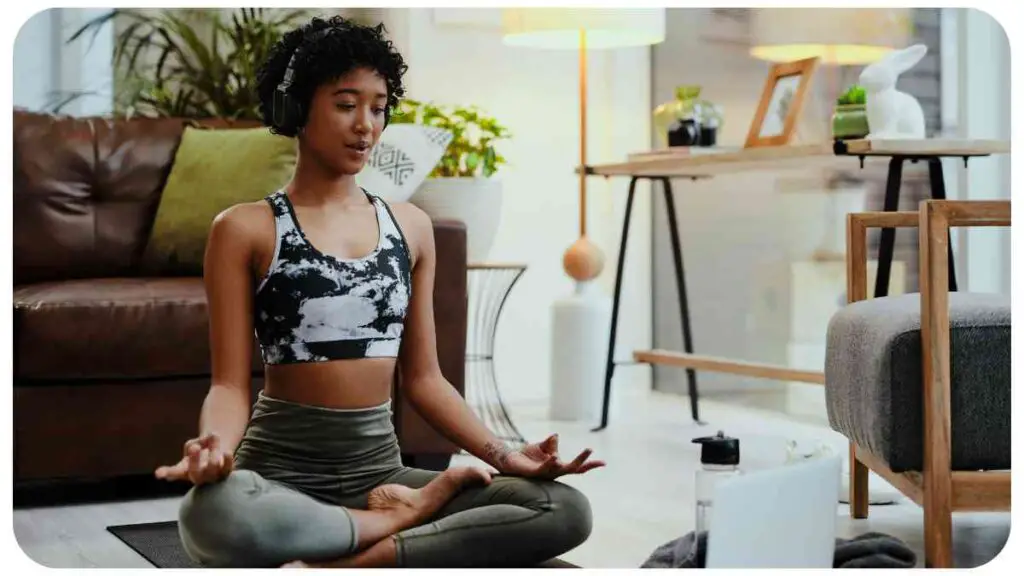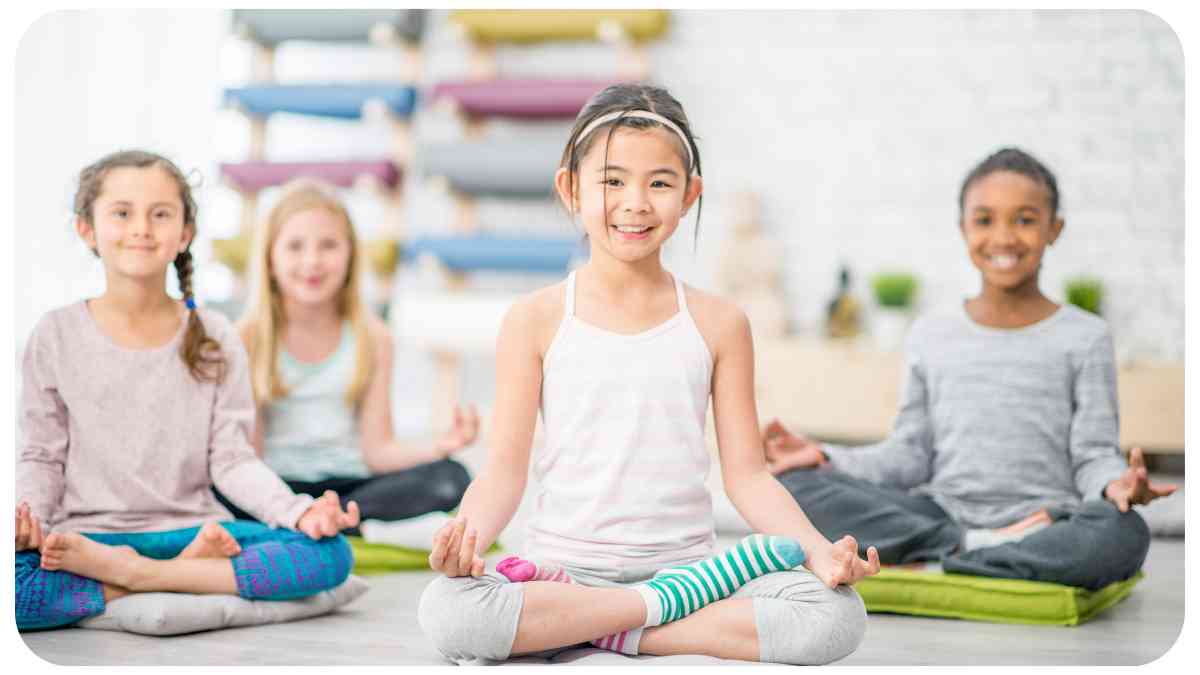Welcome to a beginner’s guide on how to meditate! In this article, we will explore the various aspects of meditation and provide you with quick tips to get started on your meditation journey. Meditation is a powerful practice that can help calm the mind, reduce stress, and enhance overall well-being.
Whether you’re new to meditation or have dabbled in it before, this guide will provide you with insights, techniques, and practical advice to make your meditation practice more effective.
| Key Points |
|---|
| Meditation is a practice that can bring calmness, clarity, and awareness into your life. |
| Creating a peaceful environment and finding the right time for meditation can enhance your practice. |
| Focusing on your breath or using a mantra can help cultivate a deeper state of meditation. |
| Guided meditation and joining a meditation community can support your meditation journey. |
| Overcoming challenges and maintaining consistency are important for progress in meditation. |
| Meditation can be integrated into your daily routine and applied in various aspects of life. |
| Exploring advanced techniques and deepening your practice can further enhance your meditation experience. |
| Keeping track of your progress and celebrating milestones can motivate and inspire you to continue. |
| Meditation is a complementary practice and may not replace medication or therapy. Consult professionals for appropriate guidance. |
| Further reading resources are available to provide additional guidance and insights on meditation. |
2. Understanding Meditation
What is Meditation?
Meditation is a practice that involves training the mind to focus and redirect thoughts. It is often used to achieve mental clarity, emotional stability, and a sense of inner peace. Meditation can be traced back thousands of years and is practiced in various cultures and religions around the world.
Building a solid foundation in yoga is essential for tapping into the deeper meaning of your practice. Explore our guide on Yoga and Spirituality: How to Tap into the Deeper Meaning of Your Practice to deepen your understanding of the spiritual aspects of yoga.
Benefits of Meditation
The benefits of meditation are numerous and well-documented. Regular meditation practice can help reduce stress and anxiety, improve concentration and focus, enhance self-awareness, promote emotional well-being, and increase resilience to challenges. Additionally, meditation can contribute to better sleep, lower blood pressure, and improved overall physical health.
Different Types of Meditation Techniques
There are several meditation techniques to choose from, each with its own unique focus and approach. Some popular types of meditation include:
| Technique | Description |
| Mindfulness Meditation | Involves focusing attention on the present moment, observing thoughts and sensations without judgment. |
| Loving-Kindness Meditation | Cultivates feelings of compassion, love, and kindness towards oneself and others. |
| Transcendental Meditation (TM) | Involves the use of a mantra to focus the mind and achieve a state of deep relaxation and heightened awareness. |
| Guided Visualization Meditation | Utilizes visualizations and guided imagery to create relaxation, reduce anxiety, and manifest positive outcomes. |
| Breath Awareness Meditation | Focuses on observing the breath, bringing attention back whenever the mind starts to wander. |
| Body Scan Meditation | Involves systematically scanning the body, bringing awareness to different sensations and promoting relaxation. |
| Zen Meditation (Zazen) | Practiced in Zen Buddhism, it involves sitting in a specific posture, observing the breath, and maintaining a state of heightened focus. |
Experiment with different techniques to find the one that resonates with you the most and aligns with your goals and preferences.
3. Getting Started with Meditation
Creating a Peaceful Environment

Before you begin your meditation practice, it’s essential to create a peaceful and quiet environment. Find a space in your home where you can be free from distractions and interruptions. Dim the lights, play soft calming music or nature sounds if it helps create a serene atmosphere. You may also consider using candles, incense, or essential oils to enhance the ambiance.
Finding the Right Time
Choose a time of day when you are least likely to be disturbed or rushed. Early morning or before bedtime are popular times for meditation as the mind is often more relaxed during these periods. However, feel free to experiment and find what works best for you. Consistency is key, so try to establish a regular meditation routine.
Looking to unlock the secrets of ancient yoga practices for ultimate enlightenment? Our comprehensive guide on Unlocking the Secrets of Ancient Yoga Practices for Ultimate Enlightenment offers valuable insights and techniques to enhance your spiritual journey through yoga.
Choosing a Comfortable Posture
Finding a comfortable seated position is essential for a successful meditation session. You can sit on a cushion or a meditation stool, cross-legged on a yoga mat, or even in a chair with your feet flat on the ground. The key is to find a position that allows you to be alert and relaxed at the same time. Your back should be straight but not rigid, and your hands can rest comfortably on your lap or knees.
Focusing on the Breath
The breath is often used as an anchor in meditation, helping to bring the mind’s attention into the present moment. Close your eyes gently and take a few deep breaths to relax your body. Then allow your breath to return to its natural rhythm. Observe the sensation of the breath as it enters and leaves your body—feeling the rise and fall of your abdomen or the sensation of air passing through your nostrils.
Guided Meditation

For beginners, guided meditation can be a helpful way to start your practice. Guided meditations provide verbal instructions and prompts that guide you through the meditation process. There are plenty of guided meditation resources available online, including apps, podcasts, and videos. Explore different options until you find a guide whose voice and style resonate with you.
Using Mantra or Affirmation
Another technique to focus the mind during meditation is using a mantra or affirmation. A mantra is a word or phrase repeated silently or aloud to facilitate concentration. Choose a simple and meaningful phrase like “peace,” “love,” or “I am calm and centered.” Repeat it gently and rhythmically, allowing it to become the center of your attention and gradually quieting other thoughts.
Discover the transformative power of yoga and its ability to change your life forever. Dive into our article on Discover the Spiritual Power of Yoga: How It Can Change Your Life Forever to explore the spiritual benefits and possibilities that yoga holds.
4. Overcoming Common Challenges
Meditation, like any practice, can come with its own set of challenges. Here are some common difficulties beginners may encounter and how to overcome them:
Restlessness and Distractions
It’s natural for the mind to wander during meditation, especially when you’re just starting. Thoughts may arise, and you may find yourself getting caught up in them. Whenever you notice your mind wandering, gently bring your focus back to your breath, mantra, or chosen point of concentration. Practice patience with yourself and remember that meditation is a continual process of training the mind.
Dealing with Racing Thoughts
If you find yourself overwhelmed with racing thoughts, try observing them without judgment. Notice them as they come and go, much like clouds passing through the sky. You can label the thoughts as “thinking” and then gently redirect your attention back to your meditation object. Gradually, the mind will quiet down, and thoughts will become less intrusive.
Physical Discomfort
Sitting in a static position for an extended period can sometimes cause discomfort or restlessness in the body. It’s essential to find a posture that is both comfortable and sustainable for the duration of your meditation. If you experience discomfort, adjust your position mindfully. You can also try stretching or doing gentle yoga poses before meditation to relax your body and release tension.
Impatience and Frustration
Meditation is a practice that requires patience and consistency. It’s common to feel impatient or frustrated, especially if you don’t notice immediate results. Remind yourself that meditation is a journey, and progress takes time. Be gentle with yourself and approach your practice with curiosity and open-mindedness. Celebrate small victories and focus on the process rather than the outcome.
5. Deepening Your Meditation Practice
As you continue your meditation journey, here are some ways to deepen your practice:
Setting Realistic Goals
When it comes to meditation, it’s important to set realistic and attainable goals. Start with shorter meditation sessions, such as 5 or 10 minutes, and gradually increase the duration as you become more comfortable. Avoid putting pressure on yourself to achieve specific outcomes or experiences. Instead, focus on the process of meditation and the benefits it brings to your overall well-being.
Increasing the Duration Gradually
Just as you would gradually increase the intensity of a physical workout, slowly increase the duration of your meditation sessions. Aim to add a few minutes each week or month, depending on your comfort level and schedule. This gradual progression allows your mind and body to adapt to longer periods of stillness and focus.
Connect with your higher self and experience the spiritual benefits of yoga. Learn more in our comprehensive guide on The Spiritual Benefits of Yoga: How It Can Help You Connect with Your Higher Self, and deepen your practice by accessing the spiritual dimensions of yoga.
Exploring Advanced Techniques
Once you have established a regular meditation practice, you may feel ready to explore more advanced techniques. Techniques like loving-kindness meditation, body scan meditation, or transcendental meditation (TM) provide different approaches to cultivating specific qualities or deepening your practice. It’s essential to research and learn these techniques from trusted sources or seek guidance from experienced meditation teachers.
Finding a Meditation Community
Joining a meditation community or attending group meditation sessions can enhance your practice. Being part of a supportive community provides the opportunity to share experiences, learn from others, and receive guidance from experienced practitioners or teachers.
Look for local meditation centers, online forums, or social media groups dedicated to meditation to find like-minded individuals.
Incorporating Mindfulness into Daily Life
Meditation is not limited to a formal sitting practice. The ultimate goal is to cultivate mindfulness in all aspects of life. Practicing mindfulness involves bringing a non-judgmental awareness to each moment, whether you’re eating, walking, or engaging in daily activities. By integrating mindfulness into your daily routine, you can experience the benefits of meditation throughout your entire day.
Combine the powers of yoga and meditation to attain spiritual enlightenment. Our guide on Yoga and Meditation: The Perfect Combination for Spiritual Enlightenment provides valuable insights and techniques to harmonize these practices and enhance your spiritual growth.
6. Incorporating Meditation into a Regular Routine
Incorporating meditation into your daily routine can help establish a consistent practice. Here are some suggestions for integrating meditation into different times of the day:
Morning Meditation
| Time | Activity |
| 5:30 am | Wake up and wash up to feel refreshed and ready for the day. |
| 5:45 am | Find a quiet space and sit comfortably. |
| 6:00 am | Begin your meditation practice. Set your intention for the day and cultivate a calm mind. |
| 6:30 am | Transition into your usual morning routine, such as making breakfast or preparing for work. |
Mid-Day Meditation
| Time | Activity |
| 12:00 pm | Take a break from work or other activities at mid-day. |
| 12:15 pm | Find a quiet space, away from distractions and noise. |
| 12:20 pm | Settle into a comfortable posture and begin your meditation practice. |
| 12:30 pm | After meditation, take a few deep breaths, and gradually transition back to your tasks. |
Evening Meditation
| Time | Activity |
| 8:00 pm | Create a relaxing environment by dimming lights or lighting candles. |
| 8:15 pm | Sit comfortably and take a few moments to unwind and let go of the day’s stress and worries. |
| 8:30 pm | Engage in your evening meditation practice, allowing your mind and body to relax and unwind. |
| 9:00 pm | Transition into a peaceful bedtime routine to promote restful sleep. |
7. Maintaining Consistency and Progress
To maintain consistency and make progress in your meditation practice, consider the following:
Establishing a Habit

Consistency is key in meditation. Set a schedule and commit to practicing meditation at the same time each day. Treat it as an essential part of your routine, just like brushing your teeth or exercising. By making it a habit, meditation becomes a natural and effortless part of your day.
Tracking Your Progress
Keeping track of your progress can be motivating and help you stay committed to your practice. Keep a meditation journal and note down the duration of each session, any insights or experiences, and how you felt before and after meditation. This record can serve as a reminder of your growth and inspire you to continue.
Celebrating Milestones
Acknowledge and celebrate milestones in your meditation journey. Whether it’s completing a specific number of days or reaching a particular duration, reward yourself for your dedication and commitment. Treat yourself to something special or engage in a self-care activity that brings you joy and relaxation.
8. Frequently Asked Questions (FAQ)
Can meditation be challenging for beginners?
Yes, meditation can be challenging for beginners, especially because it involves training the mind to focus and quieting inner chatter. It’s common to experience restlessness, racing thoughts, and physical discomfort initially. However, with regular practice and persistence, these challenges can be overcome, and meditation becomes more accessible.
How long should I meditate as a beginner?
As a beginner, start with shorter meditation sessions, such as 5 or 10 minutes per day. Gradually increase the duration as you become more comfortable and find a rhythm that works for you. The most important thing is to establish a consistent practice, even if it’s just a few minutes a day.
Is it normal to experience discomfort during meditation?
Yes, it’s normal to experience physical discomfort during meditation, especially if you’re sitting in one position for an extended period. It’s essential to find a comfortable posture and make adjustments as needed. You can try using cushions, yoga props, or sitting in a chair if sitting on the floor becomes uncomfortable. Additionally, regular stretching or incorporating mindfulness into movement practices like yoga can help alleviate physical discomfort.
Can meditation replace medication or therapy?
Meditation is a complementary practice that can support overall well-being, but it should not replace medication or therapy without consulting a healthcare professional. While meditation has many benefits, it’s important to work with qualified medical or mental health professionals to determine the best course of treatment for your individual needs.
9. Conclusion
Meditation is a beautiful and transformative practice that can bring calmness, clarity, and awareness into your life. By understanding the basics, overcoming challenges, and deepening your practice, you can experience the profound benefits of meditation.
Remember to approach your practice with patience, consistency, and an open mind. As you embark on this journey, enjoy the peace and presence that meditation can bring to your everyday life.
Further Reading
Here are some additional resources to explore for further reading on meditation:
- Mindful.org: This website provides a comprehensive guide on how to meditate, including tips for beginners, different meditation techniques, and answers to frequently asked questions.
- Gaiam: Gaiam offers an informative blog post on meditation, covering various techniques, benefits, and a beginner’s guide to getting started.
- Insider: This article from Insider provides helpful tips and guidance specifically tailored to beginners who are interested in starting a meditation practice.
FAQs
Can meditation help reduce stress and anxiety?
Yes, meditation has been found to be an effective practice for reducing stress and anxiety. By promoting relaxation, mindfulness, and cultivating a calmer state of mind, meditation can help manage stress and provide a sense of inner peace.
How long does it take to see the benefits of meditation?
The benefits of meditation can vary from person to person. Some people may notice positive effects, such as increased focus or reduced stress, after just a few sessions. Generally, consistency and regular practice are key to experiencing the full range of benefits, but the timeline can differ for each individual.
Should I meditate with my eyes closed or open?
Meditation can be practiced with either closed or open eyes, depending on personal preference. Closing the eyes can help minimize external distractions and turn the focus inward. However, some meditation techniques, like walking meditation or certain forms of mindfulness, may involve keeping the eyes open and maintaining awareness of the surroundings.
Can children and teenagers practice meditation?
Yes, meditation can be beneficial for children and teenagers. It can help improve focus, manage emotions, and promote overall well-being. However, it’s important to introduce meditation in an age-appropriate manner and with guidance from parents, teachers, or qualified professionals.
Can I meditate if I have a busy mind or find it hard to concentrate?
Yes, meditation can be practiced even if you have a busy mind or find it challenging to concentrate. In fact, meditation is especially helpful for developing focus and calming the mind. By gently bringing your attention back to your meditation object whenever your mind wanders, you are training the mind to become more focused and present.

Hello, my name is Hellen James! I am a yoga teacher and writer who loves to share information about how you can achieve a more fulfilling life. I have been practicing mindfulness, yoga, and meditation for over 10 years. My passion for these practices has led me to teach them to others.

